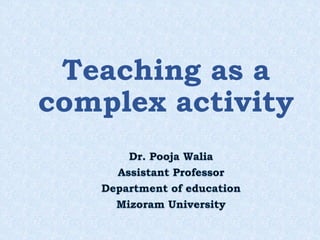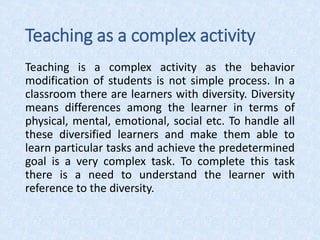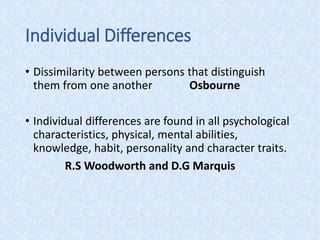The document discusses the complexity of teaching in diverse classrooms, emphasizing the need to accommodate various learner differences, including physical, cognitive, emotional, and cultural factors. It outlines characteristics of different learner types such as slow learners, gifted learners, and those with learning disabilities, along with strategies for supporting each group effectively. Additionally, it highlights the significance of understanding individual learning styles and the impact of gender and socio-cultural differences in the educational environment.











![IQ Classifications
Terman's Stanford–Binet original (1916) classification[56][57]
IQ Range ("ratio IQ") IQ Classification
Above 140 "Near" genius or genius
120–140 Very superior intelligence
110–120 Superior intelligence
90–110 Normal, or average, intelligence
80–90
Dullness, rarely classifiable as feeble-
mindedness
70–80
Border-line deficiency, sometimes
classifiable as dullness, often as feeble-
mindedness
Below 70 Definite feeble-mindedness](https://image.slidesharecdn.com/teachingasacomplex-211026085826/85/Teaching-as-a-Complex-activity-12-320.jpg)



































